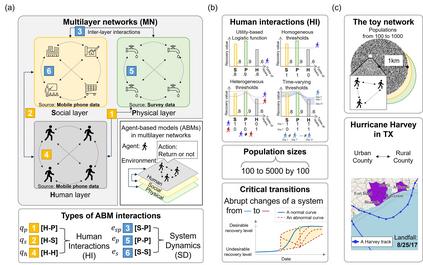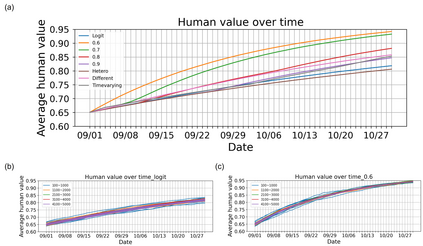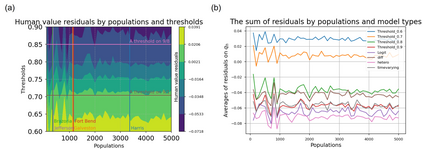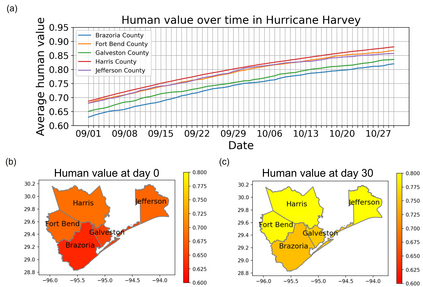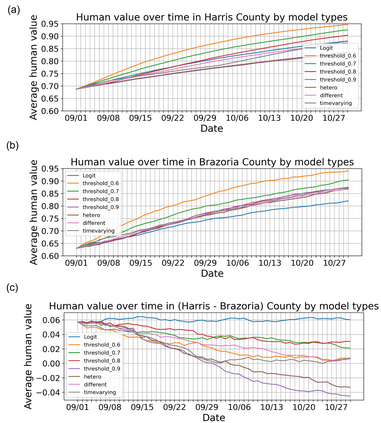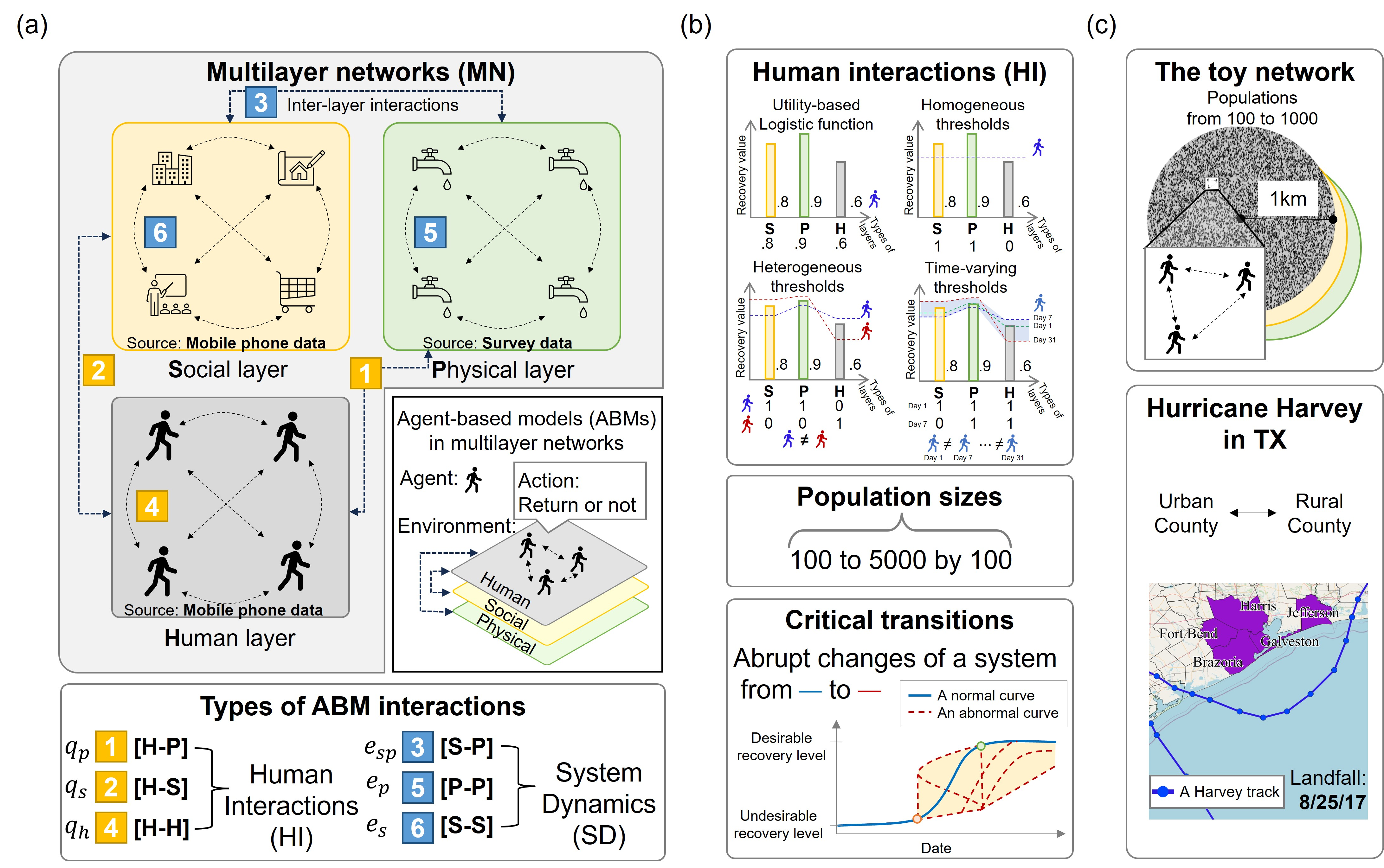Frequent and intensive disasters make the repeated and uncertain post-disaster recovery process. Despite the importance of the successful recovery process, previous simulation studies on the post-disaster recovery process did not explore the sufficient number of household return decision model types, population sizes, and the corresponding critical transition conditions of the system. This paper simulates the recovery process in the agent-based model with multilayer networks to reveal the impact of household return decision model types and population sizes in a toy network. After that, this paper applies the agent-based model to the five selected counties affected by Hurricane Harvey in 2017 to check the urban-rural recovery differences by types of household return decision models. The agent-based model yields three conclusions. First, the threshold model can successfully substitute the binary logit model. Second, high thresholds and less than 1,000 populations perturb the recovery process, yielding critical transitions during the recovery process. Third, this study checks the urban-rural recovery value differences by different decision model types. This study highlights the importance of the threshold models and population sizes to check the critical transitions and urban-rural differences in the recovery process.
翻译:暂无翻译

